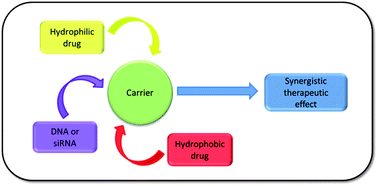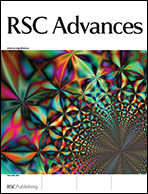Materials innovation for co-delivery of diverse therapeutic cargos
Abstract
Co-delivery is a rapidly growing sector of drug delivery that aspires to enhance therapeutic efficacy through controlled delivery of diverse therapeutic cargoes with synergistic activities. It requires the design of carriers capable of simultaneously transporting to and releasing multiple therapeutics at a disease site. Co-delivery has arisen from the emerging trend of combination therapy, where treatment with two or more therapeutics at the same time can succeed where single therapeutics fail. However, conventional combination therapy offers little control over achieving an optimized therapeutic ratio at the target site. Co-delivery via inclusion of multiple therapeutic cargos within the same carrier addresses this issue by not only ensuring delivery of both therapeutics to the same cell, but also offering a platform for control of the delivery process, from loading to release. Co-delivery systems have been formulated using a number of carriers previously developed for single-therapeutic delivery. Liposomes, polymeric micelles, PLGA nanoparticles, and dendrimers have all been adapted for co-delivery. Much of the effort focuses on dealing with drugs having dissimilar properties, increasing loading efficiencies, and controlling loading and release ratios. In this review, we highlight the innovations in carrier designs and formulations to deliver combination cargoes of drug/drug, drug/siRNA, and drug/pDNA toward disease therapy. With rapid advances in mechanistic understanding of interrelating molecular pathways and development of molecular medicine, the future of co-delivery will become increasingly promising and prominent.


 Please wait while we load your content...
Please wait while we load your content...